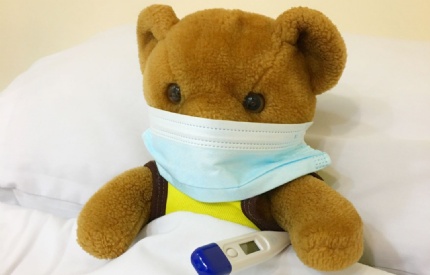Group A Strep - Letter for Parents

You will have heard lots of information on the news and on social media about a recent rise in Strep A infections – and about some tragic deaths which have resulted from an extremely rare form of the infection. This letter is to help you understand more about this infection and what to look out for and to do if you are concerned that your child could be affected by its rarer form.
Group A streptococcus (GAS) is a common bacteria. Lots of us carry it in our throats and on our skin, and it doesn’t always result in illness. However, GAS does cause several infections, some mild and some more serious. The most serious infections linked to GAS come from invasive group A strep, known as iGAS. These infections are caused by the bacteria getting into parts of the body where it is not normally found, such as the lungs or bloodstream. In rare cases, an iGAS infection can be fatal, if not treated quickly with antibiotics.
How is it spread?
GAS is spread by close contact with someone who is infected and can be passed on through coughs and sneezes or from a cut or wound. Some people can have the bacteria present in their body without feeling unwell or showing any symptoms of infections and while they can pass it on, it is more likely to spread when a person is unwell, through coughs and sneezes.
Which infections does GAS cause?
GAS causes infections in the skin, soft tissue and respiratory tract. It’s responsible for infections such as tonsillitis, pharyngitis, scarlet fever, impetigo and cellulitis.
The early symptoms of scarlet fever may include sore throat, headache, fever, nausea and vomiting. After 12 to 48 hours the characteristic red, pinhead rash develops, typically first appearing on the chest and stomach, rapidly spreading to other parts of the body, giving the skin a rough sandpaper-like texture. The scarlet rash may be harder to spot on darker skin, although the 'sandpaper' feel should be present. Patients typically have flushed cheeks often a ‘strawberry tongue’ – where white spots appear on the red tongue, making it look a bit like the flesh of a strawberry.
While infections like these can be unpleasant, they rarely become serious. When treated with antibiotics, someone with a mild illness like tonsilitis stops being contagious around 24 hours after starting their medication.
How are people infected by the invasive group A strep - iGAS?
Becoming infected by the more invasive group A strep, known as iGAS can happen when a person has sores or open wounds that allow the bacteria to get into the body, if gets into their lungs after a viral illness, or in a person who has a health condition that reduces their immunity to infection. If people have compromised immune systems – because of other health conditions – they are more vulnerable to all invasive disease.
What should parents look out for?
It’s always worrying when a child is unwell. GAS infections cause various symptoms such as sore throat, fever, chills and muscle aches. If you feel that your child seems seriously unwell, you should trust your own judgement.
Contact NHS 111 or your GP if:
• your child is getting worse
• your child is feeding or eating much less than normal
• your child has had a dry nappy for 12 hours or more or shows other signs of dehydration such as dark, strong smelling pee, feeling thirsty but going to the loo much less often than usual, or feeling dizzy
• your baby is under 3 months and has a temperature of 38C, or is older than 3 months and has a temperature of 39C or higher
• your baby feels hotter than usual when you touch their back or chest, or feels sweaty
• your child is very tired or irritable Call 999 or go to A&E if:
• your child is having difficulty breathing – you may notice grunting noises or their tummy sucking under their ribs
• there are pauses when your child breathes
• your child’s skin, tongue or lips are blue
• your child is floppy and will not wake up or stay awake
How can we stop infections from spreading?
Good hand and respiratory hygiene are important for stopping the spread of many bugs. By teaching your child how to wash their hands properly with soap and warm water for 20 seconds, using a tissue to catch coughs and sneezes, and keeping away from others when feeling unwell, they will be able to reduce the risk of picking up, or spreading, infections.
If your child has scarlet fever, keep them at home from school or nursery until at least 24 hours after the start of antibiotic treatment to avoid spreading the infection to others.
Brothers and sisters can continue to attend schools or nursery if they are well and do not have any symptoms such as sore throat, fever, chills and muscle aches.
Yours sincerely,
Jyoti Atri
Director of Public Health
Cambridgeshire County Council and
Peterborough City Council
Jonathan Lewis
Service Director: Education
Cambridgeshire County Council and
Peterborough City Council



